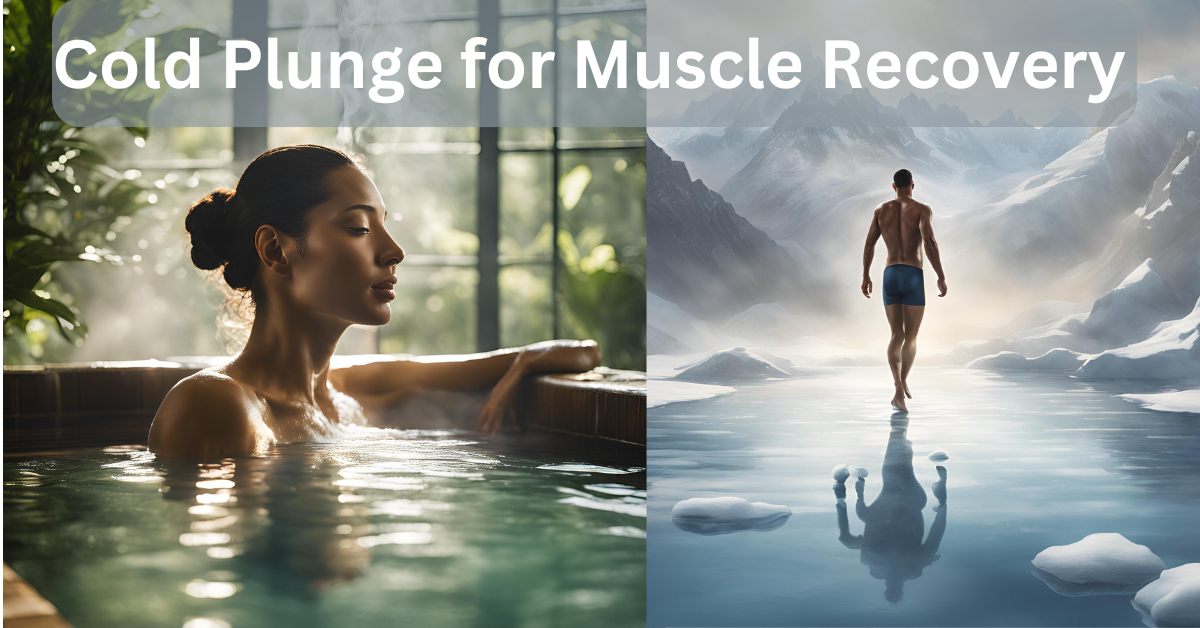When it comes to speeding up recovery after intense exercise, athletes and fitness enthusiasts are always looking for an edge. One trend gaining popularity is cold plunging immersing the body in cold water to promote faster muscle recovery. But is it effective, and how does it work? In this article, we’ll explore the benefits of cold plunges, the science behind them, and how to incorporate them into your post-workout routine.
What Is a Cold Plunge?
A cold plunge involves submerging your body in water at temperatures between 50°F to 59°F (10°C to 15°C) for a few minutes. This form of cold-water immersion (CWI) has been used for decades in professional sports for recovery, injury prevention, and reducing soreness.
While cold therapy includes methods like ice baths and cryotherapy, cold plunges are more accessible and practical, providing similar benefits at home or in recovery centers.
How Does a Cold Plunge Aid Muscle Recovery?
Cold water immersion triggers several physiological responses that make it ideal for muscle recovery. These include:
- Vasoconstriction: Cold exposure narrows blood vessels, reducing blood flow to the muscles, which helps decrease swelling and inflammation.
- Reduced Muscle Damage: Cold water lowers the metabolic activity of cells, minimizing muscle fiber damage caused by intense exercise.
- Decreased Pain and Soreness: The numbing effect of cold water reduces muscle pain by dampening nerve signals.
- Improved Circulation: Once you exit the plunge, blood flow increases, flushing out metabolic waste like lactic acid.
These processes contribute to faster recovery, allowing athletes to train more frequently and reduce the risk of injury.
Top Benefits of Cold Plunge Therapy
1. Reduces Muscle Soreness (DOMS)
Delayed onset muscle soreness (DOMS) is the stiffness and pain that follows intense workouts. Studies suggest that cold plunging can reduce DOMS by controlling the inflammatory response, helping athletes recover in as little as 24 to 48 hours.
Pro Tip: Aim for 8 to 10 minutes of immersion to reduce soreness without overexposing yourself to cold.
2. Decreases Inflammation
High-intensity workouts often result in muscle inflammation. Cold immersion reduces inflammation by slowing down cellular metabolism and constricting blood vessels. This is particularly beneficial for endurance athletes or anyone doing heavy strength training.
3. Enhances Recovery Between Workouts
Cold plunges help the body recover more efficiently, which means you can train harder and more often without feeling overly fatigued. Athletes who participate in two-a-day workouts or competitions often rely on cold plunging to stay at peak performance.
4. Supports Mental Health and Relaxation
The benefits of cold plunging go beyond physical recovery. Immersion in cold water triggers the release of endorphins and dopamine, which can improve mood and reduce stress. Regular plunging can help athletes develop better mental resilience and calm anxiety.
5. Boosts Circulation and Immune Function
Cold exposure improves circulation, encouraging the heart to pump blood more efficiently throughout the body. Some research also suggests that cold water immersion can boost immune function by increasing the production of white blood cells.


How to Do a Cold Plunge Safely
If you’re new to cold plunging, follow these guidelines to get the most out of your session:
- Start Slow: Begin with water temperatures around 59°F (15°C) and gradually lower the temperature as you get accustomed to the cold.
- Limit Immersion Time: For beginners, aim for 3 to 5 minutes per session, working up to 10 minutes.
- Breathe Deeply: Control your breathing by taking slow, deep breaths to manage the shock of the cold.
- Warm Up Afterward: Once you finish your cold plunge, warm up by doing light stretches or taking a warm shower.
When Should You Use Cold Plunges?
Cold plunges are most effective when used strategically as part of your training routine:
- Immediately After Intense Workouts: Helps minimize muscle soreness and swelling.
- On Rest Days: Promotes relaxation and recovery between workouts.
- After Injury: Reduces swelling and promotes faster healing (always consult with a healthcare professional).
Cold Plunge vs. Cryotherapy:
Both cold plunges and cryotherapy use cold to promote recovery, but they differ in application:
| Feature | Cold Plunge | Cryotherapy |
|---|---|---|
| Temperature | 50°F to 59°F (10°C to 15°C) | -200°F to -250°F (-129°C to -157°C) |
| Duration | 5 to 10 minutes | 2 to 3 minutes |
| Accessibility | Easy to do at home | Requires a cryotherapy chamber |
| Cost | Affordable | Expensive per session |
While cryotherapy delivers extreme cold for a shorter period, cold plunging provides similar benefits at a fraction of the cost.
Related Resources and Research
- National Institute of Health: Explore studies on cold-water immersion and muscle recovery.
- Healthline: Learn more about cold therapy and its benefits.
- Verywell Fit: Get tips on recovery strategies for athletes.
- Wim Hof Method: Discover how cold exposure enhances both physical and mental performance.
FAQs
For optimal recovery, 2 to 3 sessions per week are recommended, especially after intense workouts.
While cold plunging isn’t a weight loss solution, cold exposure can increase calorie burn by activating brown fat cells. However, it should be combined with proper nutrition and exercise for significant results.
Cold plunging is generally safe, but people with cardiovascular conditions or cold sensitivities should consult their doctor before starting.
Conclusion:
Incorporating cold plunges into your recovery routine can provide a range of benefits, from reduced soreness and inflammation to improved circulation and mental well-being. Whether you’re a professional athlete or a fitness enthusiast, cold plunging is an accessible and effective tool for faster muscle recovery.
With proper technique and consistency, cold therapy can help you push your limits while keeping your body refreshed and ready for the next challenge. Give it a try, and experience the recovery-boosting power of cold water!






